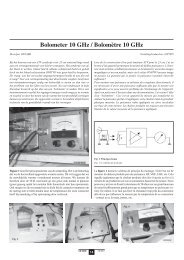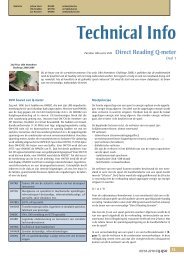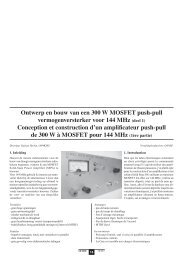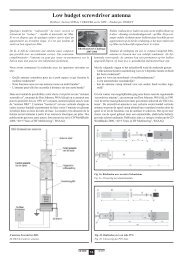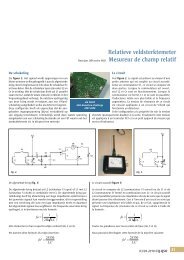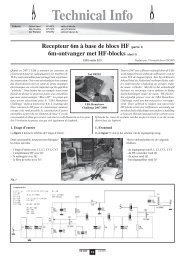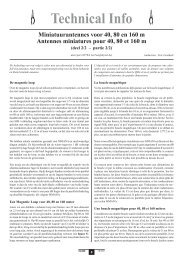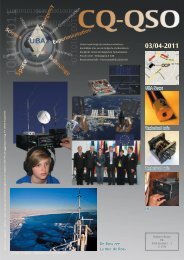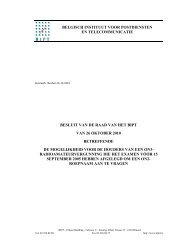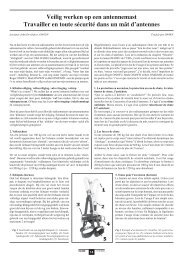IARU Region 1 VHF Managers Handbook - UBA
IARU Region 1 VHF Managers Handbook - UBA
IARU Region 1 VHF Managers Handbook - UBA
You also want an ePaper? Increase the reach of your titles
YUMPU automatically turns print PDFs into web optimized ePapers that Google loves.
Quality<br />
Q9 Clean signal, no visible sidebar pairs<br />
Q7 One barely visible pair<br />
Q5 One easily visible pair<br />
Q3 Multiple visible pairs<br />
Q1 Splatter over much of the spectrum<br />
8.6.3 The MOS (Mean Opinion Score) reporting scale for digitized speech:<br />
MOS Quality Impairment<br />
5 Excellent Imperceptible<br />
4 Good Perceptible, but not annoying<br />
3 Fair Slightly annoying<br />
2 Poor Annoying<br />
1 Bad Very annoying<br />
0 Unusable Total<br />
Notes:<br />
Non-integer MOS scores like 3.5 are possible. An MOS of 3.0 is generally referred to as toll quality,<br />
meaning good enough to pay for. Digital voice users may tolerate MOS levels less than three if they get<br />
additional benefits, such as simultaneous voice and data services.<br />
While evaluation of voice systems may be made based on test-bench measurements, they must ultimately<br />
relate to the perception of the listener. A large body of voice-system evaluations exists based on MOS.<br />
Comparisons among systems are therefore readily made. MOS relates well to the readability figures<br />
commonly used in Amateur Radio signal reports.<br />
8.7 ANTENNA POLARISATION ( Recommendation P.1.)<br />
At several conferences the antenna polarisation has been discussed. Interestingly enough the use of<br />
horizontal polarisation, almost exclusively used for non-channelised amateur traffic on <strong>VHF</strong> and higher<br />
frequencies has never been formally recommended. Part of recommendation FM.2. recommends vertical<br />
polarisation for FM repeaters .<br />
At the Lausanne conference in 1953 ( this is really the oldest technical recommendation of <strong>Region</strong> 1 ) the<br />
helical antenna thread direction was laid down. Why that was done at the time is unclear, but 30 years<br />
later (Cefalu 1984 ) the EME community felt a need for the definition of circular polarisation for EME<br />
contacts. 12 years later, however, it was recommended to use for EME above 3 GHz linear polarisation for<br />
the time being.<br />
As using circular polarisation appears to have advantages for repeater stations the matter may come up<br />
again at future conferences.<br />
<strong>IARU</strong> <strong>Region</strong> 1 page 118/148 Version 5.40<br />
<strong>VHF</strong> managers handbook




